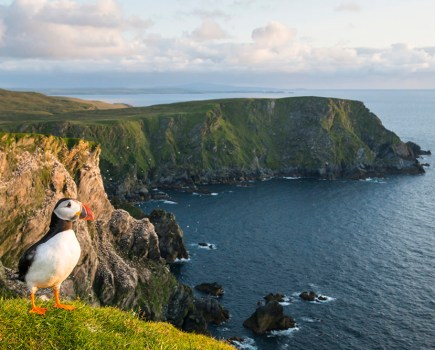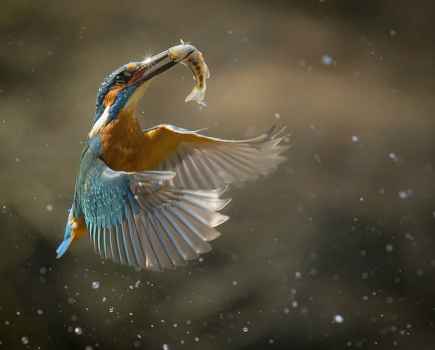A full-time, professional nature photographer, Andrew’s work is widely published and has been used in books, magazines and calendars, and by corporate and government clients. Below he details how to shoot three wildlife subjects commonly found in Spring for you to try your hand at over the coming weeks.
Adders
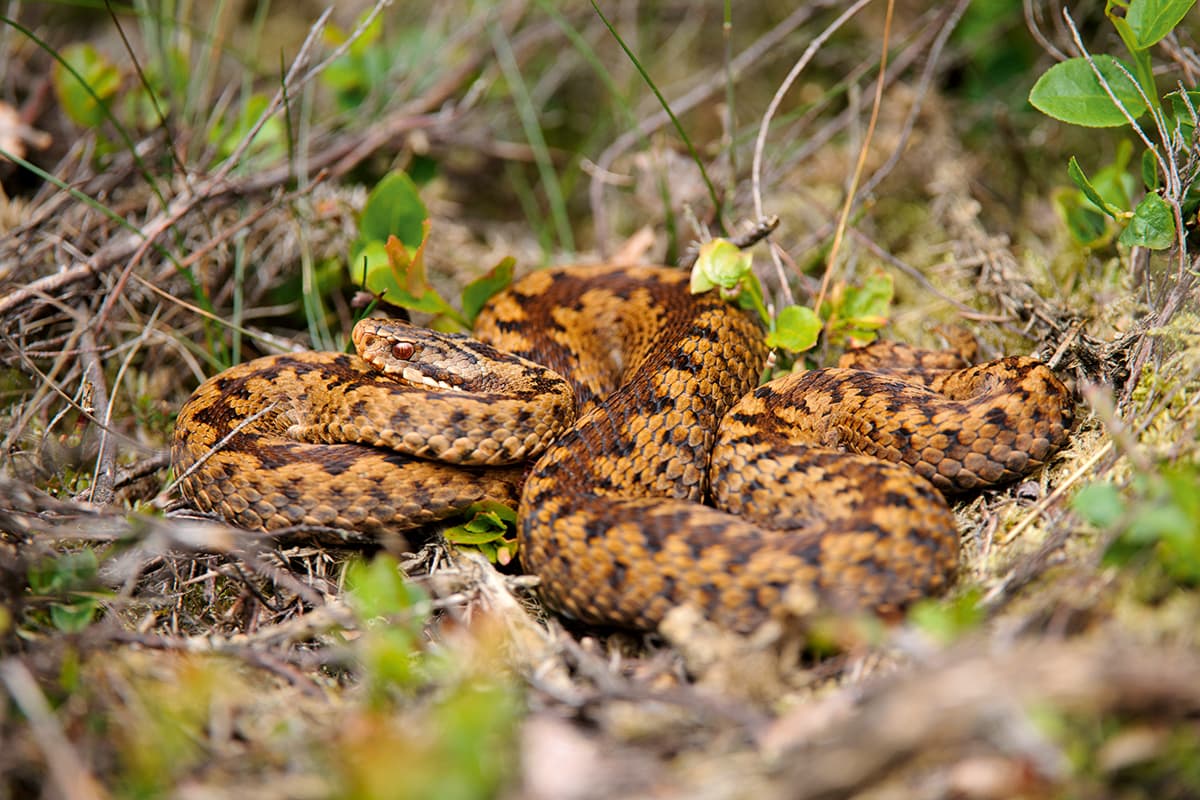
Early spring is a very good time to see and photograph adders. With the sun’s rays being less powerful, adders have to bask for longer and at this time of year it is much easier to see them, as vegetation is only just starting to grow. Having spent the colder months of autumn and winter underground, they start to emerge from hibernation at the end of February and the beginning of March.
They are territorial, preferring areas of open grassland, moorland and heather. They have a very defined, dark zigzag pattern on their back, which distinguishes them from grass snakes. Colours vary but males tend to be grey and females brown. Females are larger, growing up to 75cm, with males reaching up to 60cm. Adders are poisonous and their bite is painful, but it is only very rarely fatal.
With a careful and slow approach it is possible to get relatively close to an adder when it is basking. Adders should always be photographed in situ. This may mean your images lack that perfect foreground and background, but the welfare of the snake is paramount.
When photographing adders, I prefer to use a close-focusing telephoto lens (such as the Nikon 200-400mm) with a good reproduction ratio. This allows a reasonable working distance and allows frame-filling images to be created.
Remember, adders are classified as a priority species and are protected under law.
Ladybirds
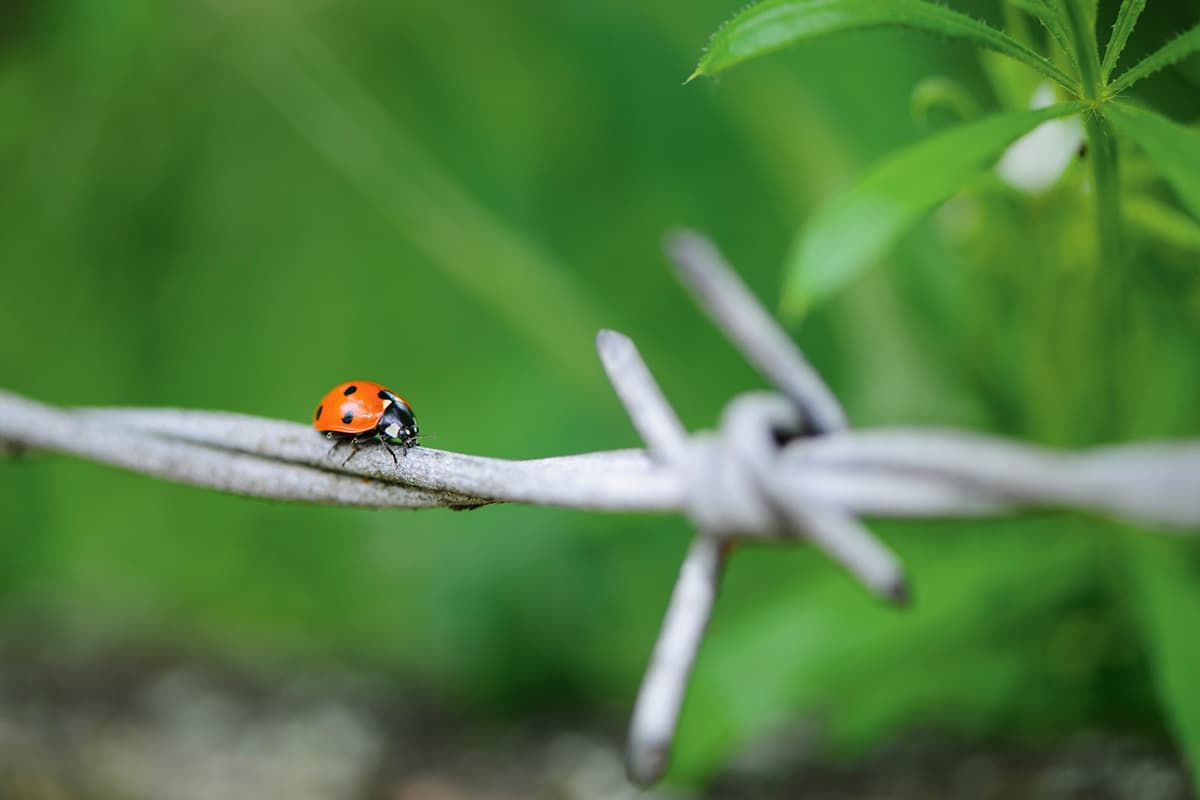
Like many insects, ladybirds become dormant during the winter months. They can be found hibernating in large groups in vegetation and crevices, such as those found in tree bark or buildings. From March, they start to emerge from hibernation to mate. Ladybirds are widespread throughout the UK and can be found where there is vegetation and the aphids they feed on.
With their bright red or orange shells and black spots, ladybirds make a great subject to photograph. On new leaves, unfolding ferns and flowers, they make for images with impact.
As well as photographing ladybirds on vegetation, interesting images can be made of them on man-made structures. I have photographed them on barbed wire and on gravestones in a churchyard near my home.
Mornings can be a good time to photograph ladybirds.
A lens with a reproduction ratio of at least 1:1 (such as a 105mm macro lens) is ideal for making true macro images of ladybirds. It is also possible to achieve this level of magnification by using close-focusing filters, extension tubes or adapters that allow lenses to be mounted in reverse.
As with all macro photography, the amount of available light can cause issues when photographing ladybirds. Dedicated macro flash units are one option where light levels are low. Another is an off-camera flash with a diffuser attached to give a softer, more even light.
In bright conditions, flash can be used to overpower the available harsh natural light. Alternatively, a diffuser can be used to reduce contrast and to soften the natural light.
Water voles
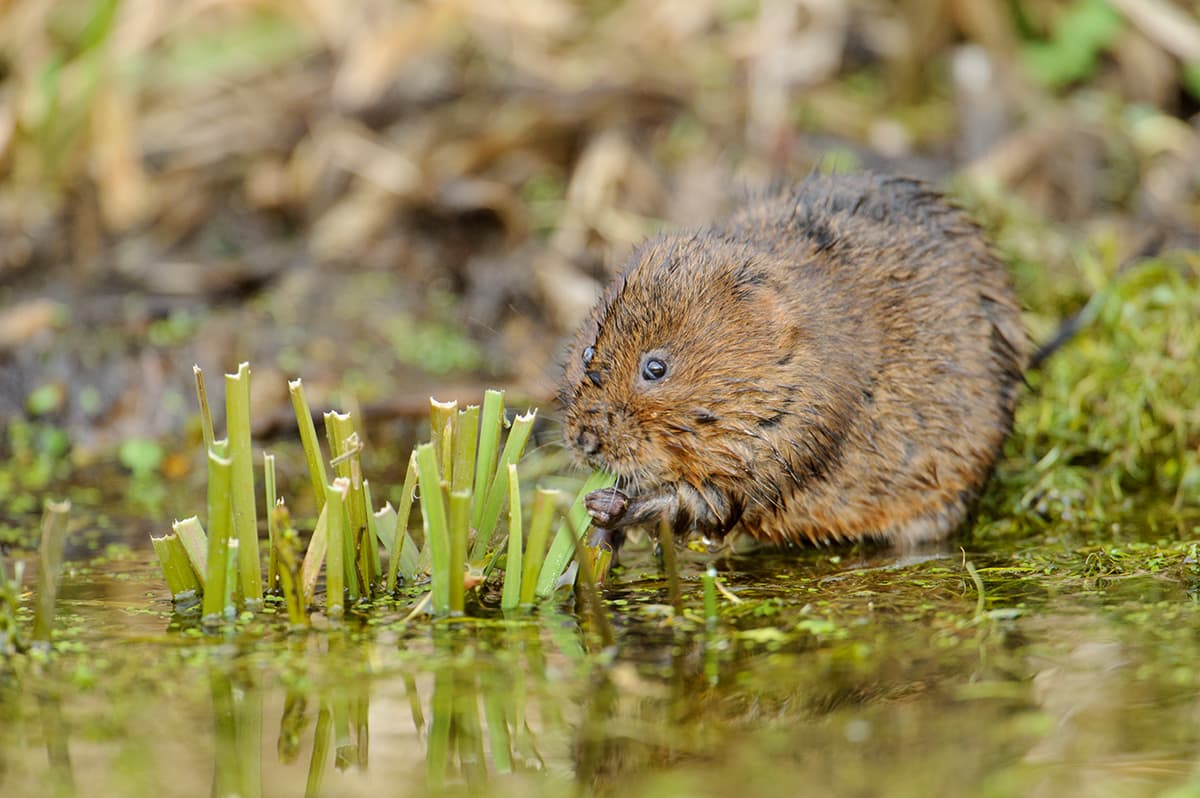
Immortalised as Ratty in Kenneth Grahame’s The Wind in the Willows, the once common water vole is, sadly, the UK’s fastest declining mammal. A combination of habitat loss and predation, following the misguided release of the captive American mink, has dealt a devastating blow to our native water vole population. Hopefully, the hard work that is being done across the country by numerous wildlife organisations will reverse the decline of this charismatic mammal.
Water voles are the largest of the voles found in the UK. While their numbers have fallen, they are nonetheless widespread. They live in burrows in and around slow-flowing streams, rivers and ditches, reed beds and marshes, ponds and lakes, and wet moorland. They have favourite areas where they will feed on vegetation, often making ‘lawns’ of grass cut at a tell-tale angle of 45°. Another field sign to look out for are their latrines of lozenge-shaped droppings that can be found on rocks and stones.
While water vole populations are not at their highest in early spring, it is one of the best times to photograph them since the vegetation in their preferred habitats is at its least dense. Once you have located an area where water voles are present, you will have to spend time observing the area to build up a working knowledge of the resident water voles’ behaviour and the places it may be possible to photograph them in.
I prefer to photograph water voles from their eye level. Not only does this give a more intimate perspective, but when using a long telephoto lens it helps to blur the background, which makes them stand out. Photographing from water level can be challenging, but it works well when the water voles are swimming in, or eating in and around the water. Photographing through vegetation can also produce engaging images. As a result of their decline, water voles are protected by law, so when photographing them, take care to avoid disturbing them at their places of shelter.





